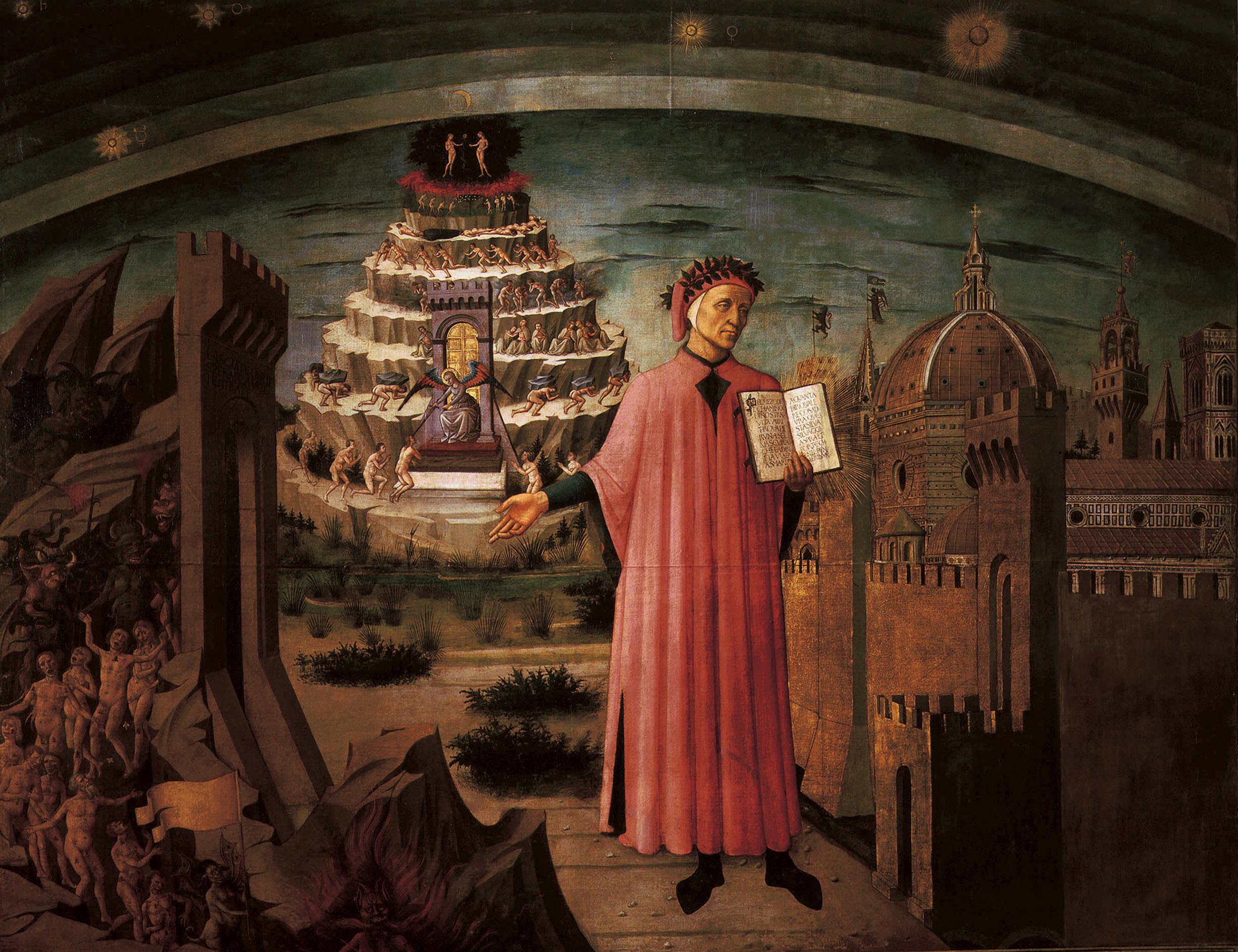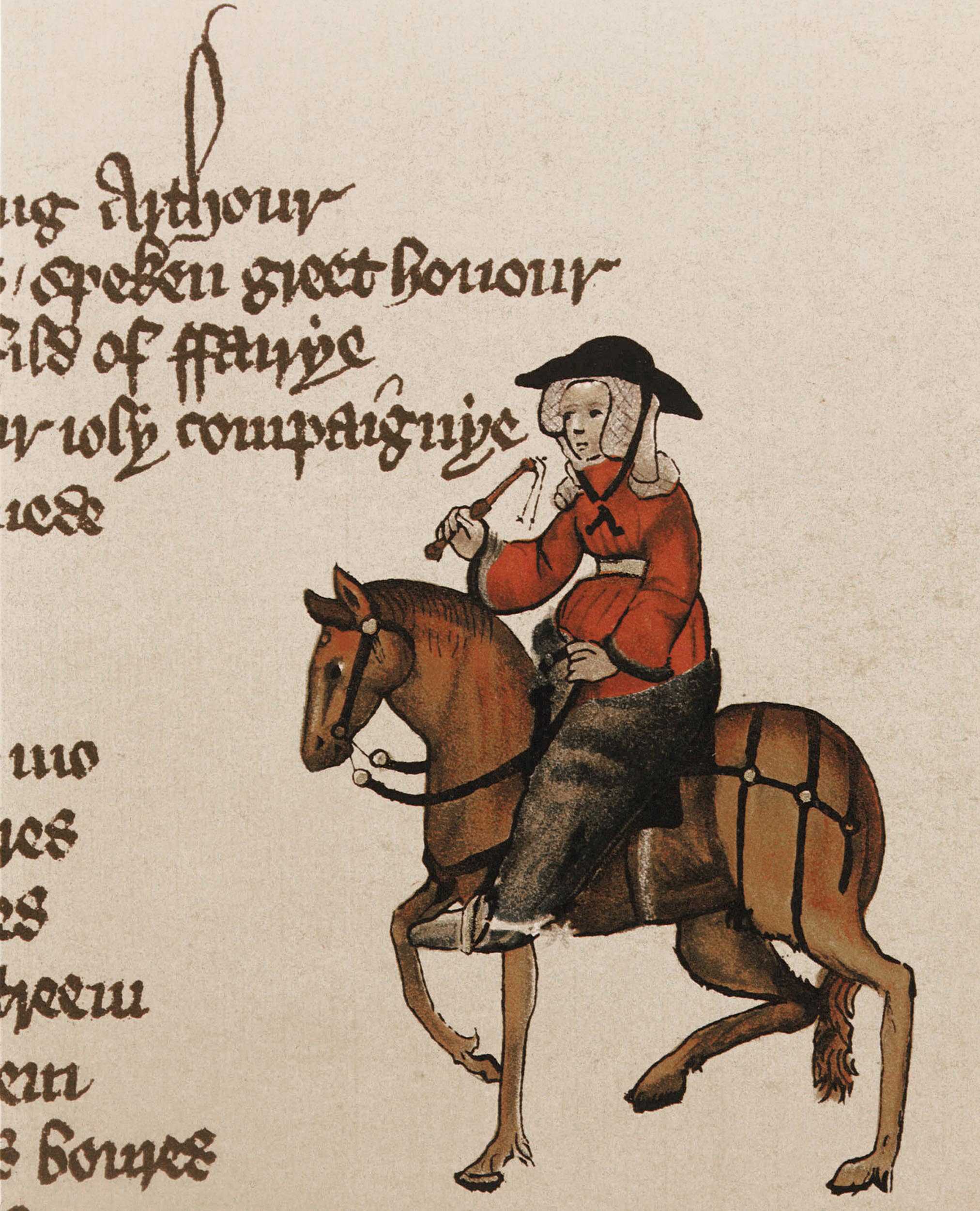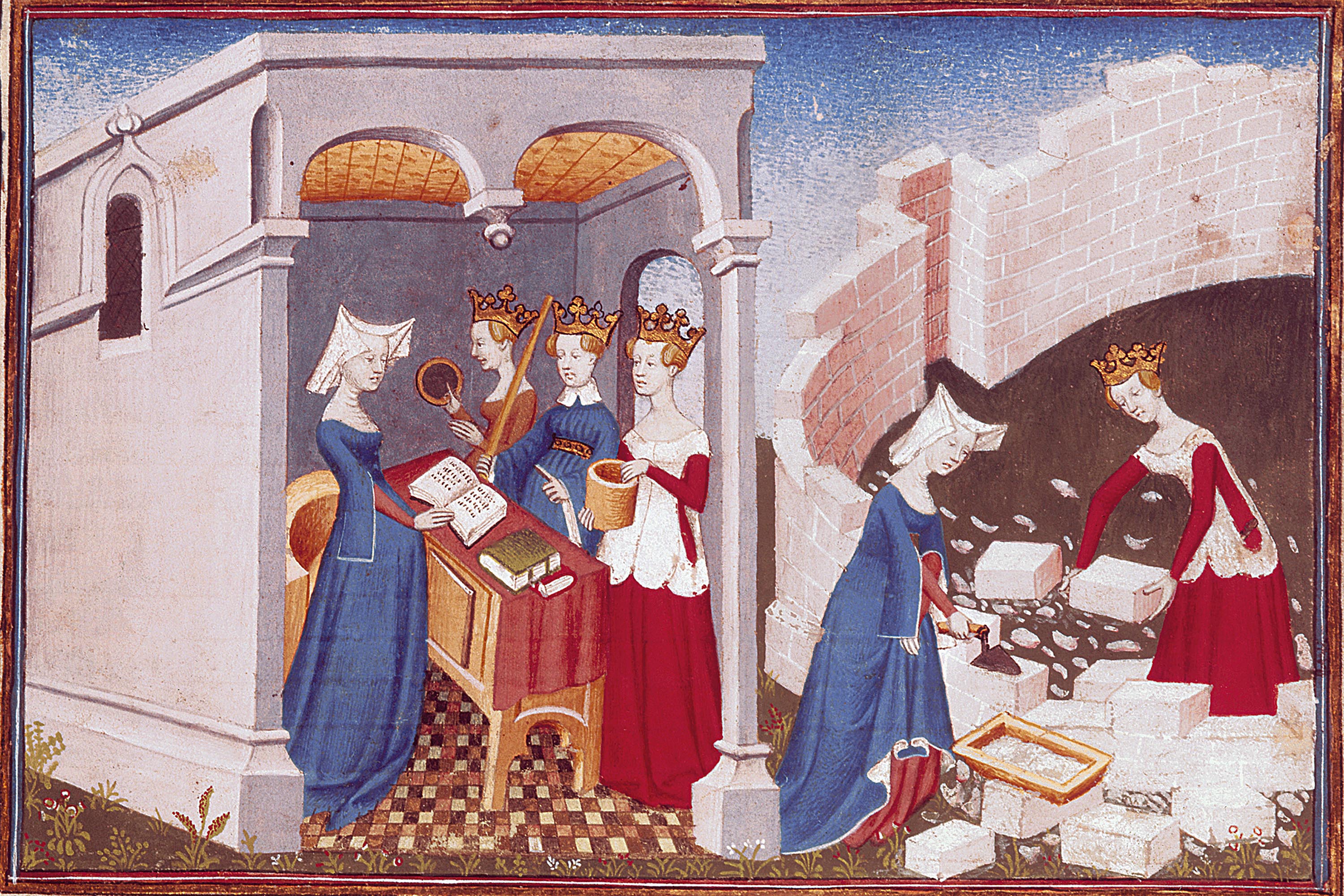The Tuscan Vernacular Tradition
 Early works such as The Song of Roland began a tradition of writing in the local or vernacular language instead of Latin, the language of scholarship. Dante Aligheri's Divine Comedy, written in Italian, is one of the greatest vernacular literary works in history. Dante imagines the travel of a Christian soul from Hell to Salvation, and peoples this world with real figures of the period and of antiquity, such as the Roman poet, Virgil, Caesar, Homer, Socrates and Beatrice, the love of his life. Of particular ingenuity is his creation of nine rings of hell as depicted in Inferno nine circles of Purgatory, and nine circles of Heaven. The Divine Comedy ends with Dante's understanding of and intense longing for God.
Early works such as The Song of Roland began a tradition of writing in the local or vernacular language instead of Latin, the language of scholarship. Dante Aligheri's Divine Comedy, written in Italian, is one of the greatest vernacular literary works in history. Dante imagines the travel of a Christian soul from Hell to Salvation, and peoples this world with real figures of the period and of antiquity, such as the Roman poet, Virgil, Caesar, Homer, Socrates and Beatrice, the love of his life. Of particular ingenuity is his creation of nine rings of hell as depicted in Inferno nine circles of Purgatory, and nine circles of Heaven. The Divine Comedy ends with Dante's understanding of and intense longing for God.
The Black Death
The significance of the Black Death (Bubonic Plaque) and its aftermath cannot be overstated. Besides the huge number of dead, about 25 million, society was fractured and trade was interrupted. The need for a scapegoat led to pogroms of the Jews, punishment of self by flagellants, and psychological effects, including doubt of the church. There were many artistic representations of the plague depicting skeletons, cadavers, graves and rotting corpses. These features were usually in the form of a memento mori, literally "What you are we were and what we are you will be."
Giovanni Boccaccio's The Decameron was set against the backdrop of the plague where the characters escape the death ridden city for the country to wait out the passing of the disease or their own death. The use of vernacular language highlights the immediacy of the tale and the stories are themselves imbued with a realistic representation of life as it is truly lived.
 Chaucer was the first Englishman to translate Petrarch's work. His Canterbury Tales (Reading 15.9). though written in verse, heroic couplets, rather than prose, mirrors Boccaccio's in that stories are told by characters in need of diversion. The variety of people who tell their tales and the details of their stories present a realistic view of the era as Chaucer's characters come from all three estates, social ranks.
Chaucer was the first Englishman to translate Petrarch's work. His Canterbury Tales (Reading 15.9). though written in verse, heroic couplets, rather than prose, mirrors Boccaccio's in that stories are told by characters in need of diversion. The variety of people who tell their tales and the details of their stories present a realistic view of the era as Chaucer's characters come from all three estates, social ranks.
Many of both Boccaccio's and Chaucer's characters are women and they represent a new, increasing independence among European women. In the Tale of Filippa, Boccaccio has Filippa charge her husband with adultery as she declares there is a double standard for men and women.
 Christine de Pizan became the first female professional writer in European history. She was educated in the French court and when her husband died and she was left with three children to raise, she turned to writing. In her Book of the City of Ladies (fig. 15.21), she attacked male misogyny by rehearsing the accomplishments of women throughout the ages.
Christine de Pizan became the first female professional writer in European history. She was educated in the French court and when her husband died and she was left with three children to raise, she turned to writing. In her Book of the City of Ladies (fig. 15.21), she attacked male misogyny by rehearsing the accomplishments of women throughout the ages.
